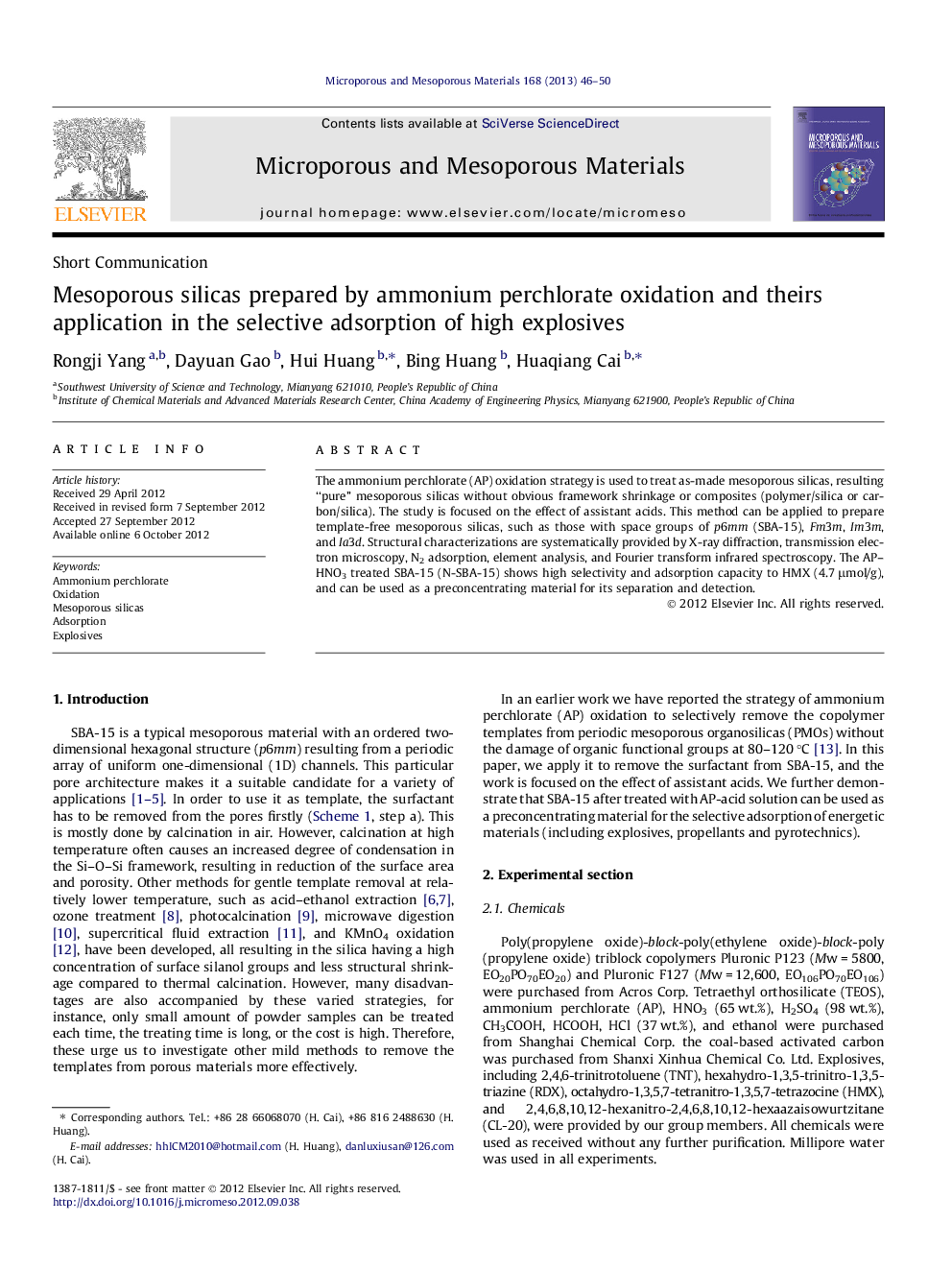| Article ID | Journal | Published Year | Pages | File Type |
|---|---|---|---|---|
| 73657 | Microporous and Mesoporous Materials | 2013 | 5 Pages |
The ammonium perchlorate (AP) oxidation strategy is used to treat as-made mesoporous silicas, resulting “pure” mesoporous silicas without obvious framework shrinkage or composites (polymer/silica or carbon/silica). The study is focused on the effect of assistant acids. This method can be applied to prepare template-free mesoporous silicas, such as those with space groups of p6mm (SBA-15), Fm3m, Im3m, and Ia3d. Structural characterizations are systematically provided by X-ray diffraction, transmission electron microscopy, N2 adsorption, element analysis, and Fourier transform infrared spectroscopy. The AP–HNO3 treated SBA-15 (N-SBA-15) shows high selectivity and adsorption capacity to HMX (4.7 μmol/g), and can be used as a preconcentrating material for its separation and detection.
Graphical abstractMesostructured surfactant/silicas were treated by AP–HNO3 oxidation to form template-free SBA-15 (a) or composites (b), and template-free SBA-15 showed high selectivity and adsorption capacity to the high explosive HMX.Figure optionsDownload full-size imageDownload as PowerPoint slideHighlights► “Pure” mesoporous silicas were prepared by ammonium perchlorate oxidation. ► Template-free mesoporous silicas of space group Fm3m, Im3m, and Ia3d were prepared. ► Mesoporous silicas products showed almost no obvious framework shrinkage. ► Mesoporous silicas products had a high concentration of surface silanol groups. ► The AP–HNO3 treated SBA-15 showed high selectivity and adsorption capacity to high explosive HMX.
